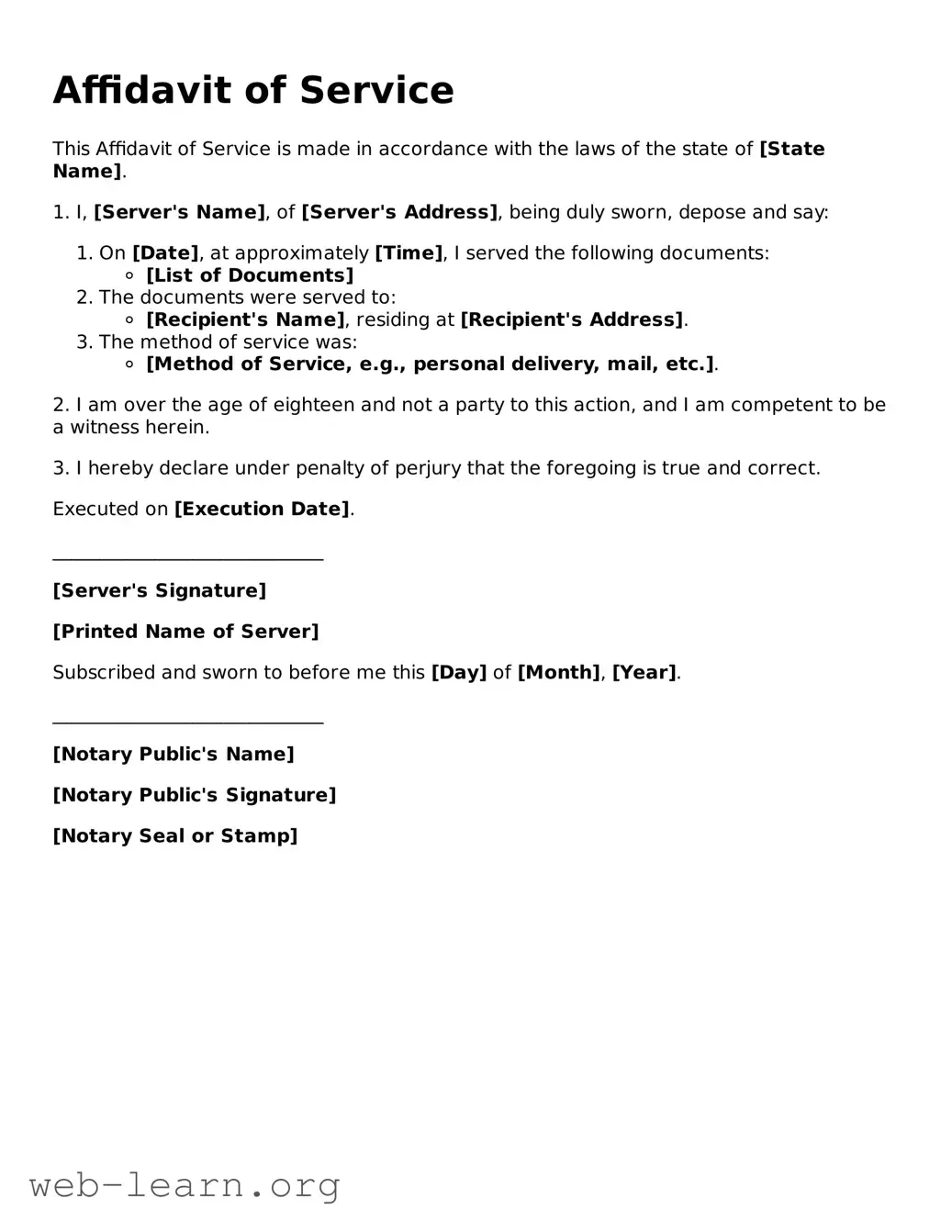Affidavit of Service
This Affidavit of Service is made in accordance with the laws of the state of [State Name].
1. I, [Server's Name], of [Server's Address], being duly sworn, depose and say:
- On [Date], at approximately [Time], I served the following documents:
- The documents were served to:
- [Recipient's Name], residing at [Recipient's Address].
- The method of service was:
- [Method of Service, e.g., personal delivery, mail, etc.].
2. I am over the age of eighteen and not a party to this action, and I am competent to be a witness herein.
3. I hereby declare under penalty of perjury that the foregoing is true and correct.
Executed on [Execution Date].
_____________________________
[Server's Signature]
[Printed Name of Server]
Subscribed and sworn to before me this [Day] of [Month], [Year].
_____________________________
[Notary Public's Name]
[Notary Public's Signature]
[Notary Seal or Stamp]
